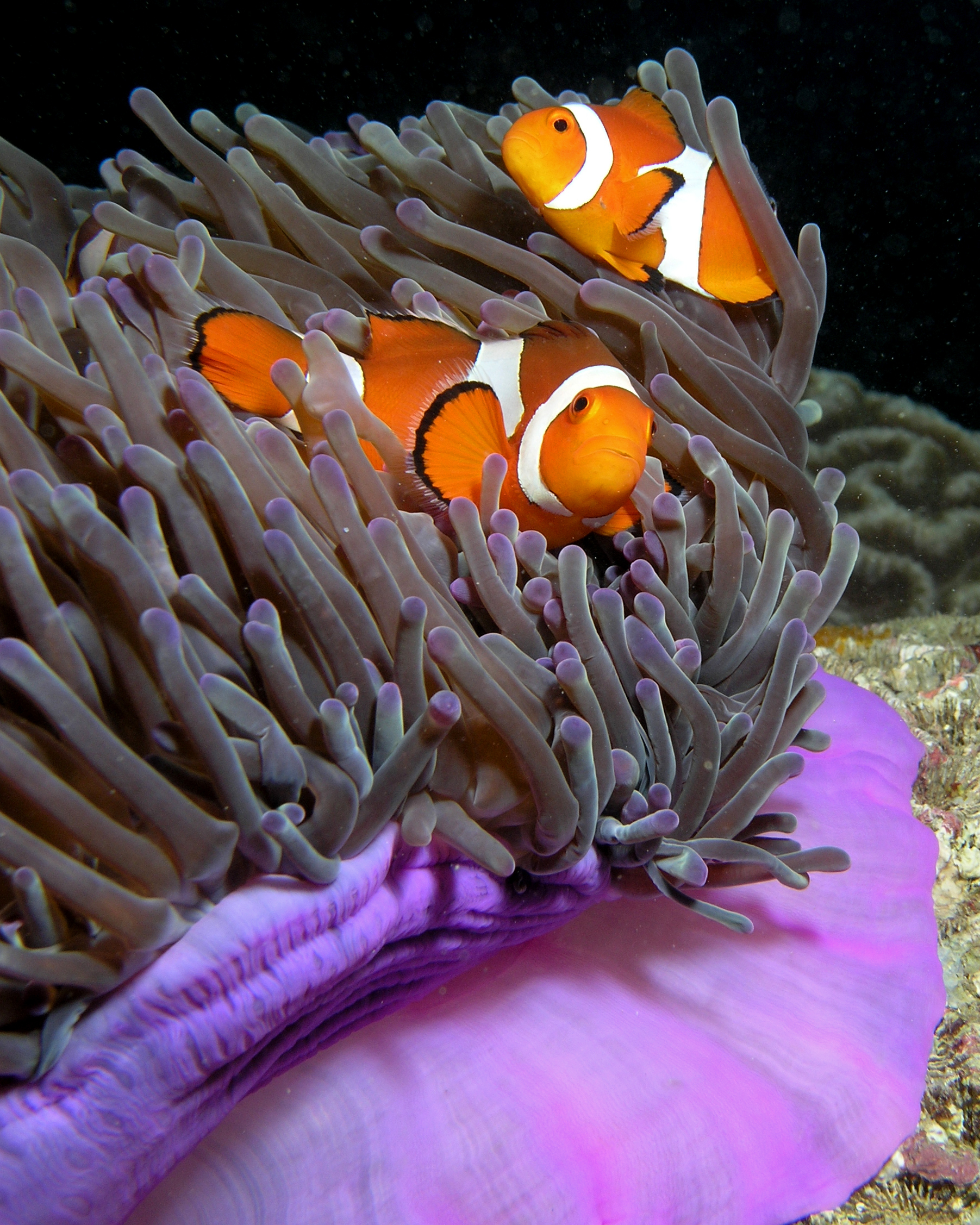Finding Nemo is, for the most part, a OK portrayal of how clownfish live (if a little bit too anthropomorphized). Clownfish (which come in two genera; the kind most know are from Amphiprion) are native to the warm waters of the Indian and Pacific Oceans, including Australia's Great Barrier Reef. They also live in...
...anemones. Clownfish are also called 'anemonefish' for a reason: Those cute little fish live in fleshy pillars tipped with tentacles. Stinging tentacles, in case your mind got the wrong idea.

Anemone stings hurt. A lot. They look like alien flowers, but are closer to (real) hydras than any pansy. Like all cnidarians, the anemones' tentacles are tipped with nasty little hooks called cnidocytes. Given that one hit is usually fatal in a natural environment, it's amazing that something evolved to not only become immune to the anemone's venom, but live in it.
Clownfish and certain damselfish are the only fish immune to the anemone's stinging venom. The fish is protected by a (possibly sugar-based) mucous coating developed from frequent, brief contact with its anemone. Clownfish coevolved with the anemones, and the anemones, being picked clean of all sorts of debris by the clownfish, are cool with that. The clownfish basically eat anything the anemone does not, sort of like the cat and/or dog cleaning your dishes. They even eat the anemone's dead tentacles.

The benefits of cnidarians keeping colorful fish go beyond trash disposal. A clownfish's bright colors may lure other fish to the anemone's stinging tentacles. If something chases the clownfish, BAM, face full of poison as soon as it gets back to home base. The anemone gets food and the clownfish gets a house; a win-win situation like this is called symbiosis.
 |
| AND STAY OUT! |
The clownfish are weird in their own right. Besides evolving to resist anemone venom, they live with two fish per anemone in a much larger group. This group is headed by a single mating male-female pair (with the female being larger and more aggressive than the male). These two are the only clownfish that really have sex and the only two to mate. If the highest female of the much big group dies, the highest male replaces her...by changing his sex. Clownfish are born hermaphrodites, which is uncommon in fish, but definitely not child-friendly enough for Finding Nemo.
 | ||
| "Hey, dad? Why have those guys been comin' to the anemone every night? Is there something you're not telling me?" |
The movie was also right about clownfish being very popular in the exotic pet trade. Clownfish are easily bred in captivity, and are one of the few decorative fish to have a well-recorded life cycle in captivity. Good thing, too- it means less need for taking Nemo away from his habitat and damaging an already-fragile ecosystem.



No comments:
Post a Comment